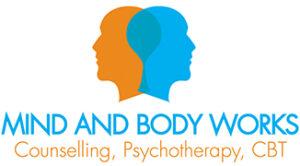‘Life is largely a process of adaptation to the circumstances in which we exist.’ (H. Selye)
WHAT IS ANXIETY ?
Anxiety is a state of uneasiness or apprehension, when we allow too much worry or stress interfere with our quality of life. Anxiety Disorder is a chronic, psychological condition, characterised by overwhelming feelings of anxiety, fear and physical symptoms such as palpitations, sweating or panic attacks.
WHAT IS STRESS AND HOW DOES IT AFFECT YOU?
Everyday life bombards us with a potentially stressful set of experiences. Stress is any change you must adapt to, ranging from the negative extreme of actual physical danger, to the positive stress of happy events and achieving long term goals. Not all stress is bad or life-threatening, it’s a healthy self-protection system that’s necessary for survival. It’s our reaction to it that determines the impact stress has on our lives. The more the demands of the situation outweigh the resources we have to deal with them, the more stressful the situation is likely to be. Dealing with too much responsibility at home or in work , as a parent or breadwinner, annoyances of everyday life e.g. difficult work situations, traffic jams, academic deadlines etc. to more severe stressors – major events such as divorce, death, academic or career failure, or serious illness, place strong demands on us and require major efforts to cope.
EARLY EXPERIENCES ESTABLISH A FRAMEWORK FOR EMOTIONAL LIFE.
If the framework is secure, it gives us confidence that we can negotiate the ups and downs of emotional life, and enlist the help of others when needed. If the framework is shaky and insecure, then we find it much harder to cope effectively with Anxiety and Stress, and will feel little confidence either in coping as an individual or in relying on others to help. Securely attached children learn to trust others and form a secure emotional template to help them negotiate their way through life. Children with ambivalent attachment grow up looking for high levels of responsiveness and approval in relationships, and children with avoidant attachments grow up wary and form defences that numb feelings, distance themselves from others.
ANXIETY IN THE FAMILY;
Gerhardt (2004) says that there is a link between early experiences in babyhood and adult disorders. She explores how a sensitive stress response, or a difficulty in regulating emotions, along with insecure attachments to others, can make individuals vulnerable to Anxiety and Stress. Our early experiences form characteristic ways of relating to other people and of coping with life. The self-image of each family member and the collective self-image of the family as a group have a bearing on the way a child will grow. O’Donnchadha (2001) says the child learns to regulate feelings through interaction with his caregivers, learning how to relate first to family, then in the outside environment. Rothschild states that adults who did not have the benefit of a healthy emotional attachment may have limited capacity for regulating stress.
STRESS IS EXPERIENCED FROM FOUR MAJOR SOURCES–
- THE ENVIRONMENT. The environment is all around us – work or school environment, traffic congestion, pollution, noise, phones ringing, people talking loudly, television etc.
- SOCIAL STRESSORS. Constant demands from your family, employers, friends and acquaintances, dealing with finances, or deadlines.
- STRESS IN THE BODY; WEAR AND TEAR OF ANXIETY ON THE BODY HOW IT AFFECTS OUR ABILITY TO WITHSTAND ILLNESS.Our bodies also suffer from stress due accidents, illness, aging, drug or alcohol dependence, lack of exercise, diet, – all contribute to our quality of life. The presence of negative emotions is an important feature of the stress response and links stress and emotion. Managing chronic stress is at the extreme end of emotion. The body is threatened by overwhelming feelings, the stress response is activated by the hypothalamus, which floods the body with cortisol, putting the other systems in the body on hold, and using energy to focus on the stress. This wears the body down and leads to vulnerability to disease. People can live with a chronic state of stress in their bodies, leading to physical symptoms that are the basis of anxiety, panic, weakness, exhaustion, muscle stiffness, concentration problems and sleep disturbance. Our bodily responses may therefore, take an unnecessary toll on our physical and paychological well being.
- STRESS SOURCED FROM YOUR THOUGHTS; the most powerful source of stress is our thoughts. There is an impact on our lives from Irrational, distorted thinking. We can allow our thoughts to run unchecked – often about situations that haven’t or won’t ever occur. This triggers feeling of anxiety. Events that place strong demands on us are called stressors – “I’m all stressed out, tensed up, can’t concentrate, flying off the handle, etc. The more the demands of the situation outweigh the resources we have to deal with them, the more stressful the situation is likely to be. This can present as feeling angry, mood swings, panicky feelings or feeling wounded and unrepresented by comments from others
REFERENCES:
Rothschild, B, The Body Remembers, (2000)
O’ Donnchada, R. The Confident Child, A Guide to Fostering Personal Effectivness in Children. (2000) Gill and Mc Millan.
Gerhardt, Sue, Why Love Matters (2004) Brunner Routeledge, Hove, New York.
Selye, H, The Stress of Life, (1976) Rev. Ed, Mc Graw Hill, New York.

